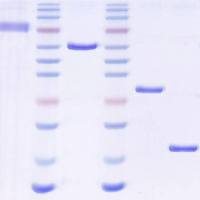Introduction to Nuclear Magnetic Resonance
互联网
703
This brief guide is not intended as a full explanation of the theory and practice of nuclear magnetic resonance (NMR), on which there are a large number of excellent texts (1 –3 ), but as an introduction to the terms used in the subsequent chapters. The section as a whole does not provide a comprehensive outline of the NMR of organic compounds, which would be out of place in this volume, but is a selection of particular applications likely to be of use to molecular biologists and biochemists. Over the last few years, the number of publications dealing with NMR determinations of protein and peptide conformation in solution has increased dramatically, and this is reflected in the amount of space given here to the subject in Chapters 2 and Chapters 3 . The use of NMR in the study of internal mobility in proteins and in interactions between molecules is covered in Chapter 7 . Chapters 5 and Chapters 6 deal with structural studies on complex carbohydrates, which have thrived on recent advances in NMR. Nucleic acids and their interactions are covered in Chapter 4 .








